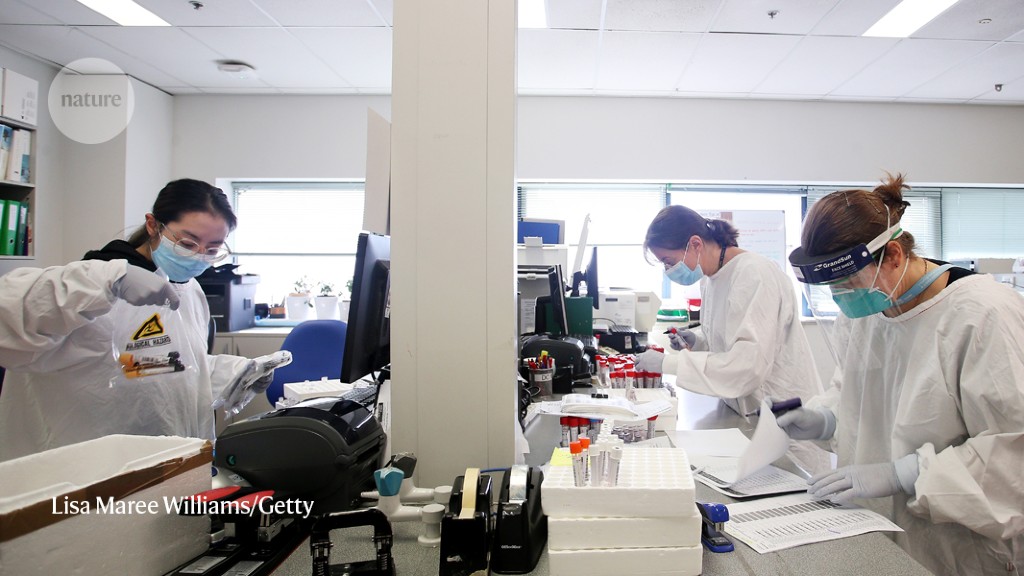Science / Tech
Anti-Male Bias at the NHMRC
Imposing gender quotas for research funding is counterproductive and sets a dangerous new precedent.

Almost a year ago, I wrote about a Nature article titled, “Outcry as Men Win Outsize Share of Australian Medical-Research Funding.” Its author, Holly Else, appeared to welcome a petition calling for the imposition of gender quotas on the awarding of “investigator grants” by the National Health and Medical Research Council (NHMRC). The petition was created by two female biology researchers and concluded with this:
We are calling on the NHMRC to improve equity for women in STEMM by allocating the same amount of funding to each gender (including a separate pot for non-binary applicants) and to set quotas at each of the Investigator Grant (fellowship) levels for each gender to ensure that all academic levels are supported with equity. Please sign with your support for equitable funding for women in STEMM.
Those who read past Nature’s inflammatory heading, however, encountered facts that belied the apparent need for gender quotas. “At the most junior level,” Else reported, “women as a whole secured equal amounts of funding to men.” It was only in the most senior area where a disparity in the opposite direction appeared. In that quintile, women received just over 20 percent of funding, while men received almost 80 percent.
This would represent a serious and potentially inappropriate skewing of funding, but for the fact that at the senior level there were four times more male than female applicants—corresponding almost exactly to the funding split. So, the probability of receiving funding was essentially identical for male and female applicants, with no evidence of gender disparities in grant success rates.
Why, then, are there more men applying for funding at the senior level? The most obvious answer is also the most simple—there are more men than women in the senior ranks of Australia’s health and medical researchers. This reflects the fact that scientific fields were, until a few decades ago, almost entirely dominated by men. That era is now over, and Australian medical schools have achieved gender parity, which is reflected in the funding of male and female researchers in mid and junior ranks today.
So, it appears that funding reflects gender demographics in a reasonably predictable way, and demonstrates a clear move toward gender equality. Moreover, to address any further misconceptions about gender imbalances, the NHMRC CEO Anne Kelso added last year that funding rates for men and women were nearly equal in regards to the NHMRC’s entire $1.1 billion budget. (Those concerned about sexism at NHMRC should bear in mind that, of its CEO, general manager, and three executive directors, only one is a man.)
In spite of this evidence, the activists behind the “Fund Women in STEM Equitability” petition demanded a systemic gender bias in favor of females (and, without any obvious rationale, in favor of non-binary applicants as well) by the NHMRC. That bias has now been officially instituted. Last week, the NHMRC announced plans to award half of its research grants for researchers at the mid-career and senior level to women and non-binary applicants.

Anna-Maria Arabia, chief executive of the Australian Academy of Science in Canberra, has already called the new policy a “game-changer,” which she believes will address the “significant under-representation of women at senior levels.” A more rational approach might have been to address that under-representation directly by simply allowing the natural promotion process for the current equitable crop of female junior researchers to run its course. Any remaining inequities in funding demographics could then be investigated for bias before resorting to gender quotas.
The NHMRC is no stranger to gender preferences for female applicants, however. In 2017, it introduced “structural priority funding,” which reserves additional money—around eight percent of the overall grant budget—for high-quality “near-miss” research applications led by women. Amazingly, they are continuing this policy, even for junior-level researchers, where the gender imbalance has already been reversed! From 2019–21, more applications for investigator grants at the earliest career stage came from women, who were awarded 137 grants compared to 123 for men. Remarkably, with regard to this latter statistic, CEO Kelso stated, “We found that we hardly needed to use any structural priority funding for the more junior levels.”
Gender politics seem to have trumped basic standards of fairness when it comes to support of STEM research, at least in Australia. The inclusion of non-binary applicants in the new regulations offers a clear indication of this shift. Nowhere in the claimed disparities has there been any evidence of bias for or against this group. The inane preoccupation with bean counting based on gender or identity may seem appealing on the surface as an attempt to ensure “equity,” but equity really ought to imply equal treatment of all individuals, irrespective of their gender or other aspects of their self-identity.
The national consultation on options to reach gender equity in the Investigator Grant scheme informed the development of gender equity initiatives to commence in 2023. Thank you to everyone who contributed during the consultation period. https://t.co/Jjp4CairZ8 https://t.co/AzFNgQwJOz
— Professor Anne Kelso (@ceo_nhmrc) October 12, 2022
Equal opportunity, not equal outcome, should be the goal of a free society. What the NHMRC is now doing, by capitulating to an activist group of petitioners, is quite the opposite. Assuming that next year’s applicant pool is not significantly different than this year’s, senior female researchers will be favored in the selection process compared to males by a factor of four to one in order to achieve equal grant reception.
As I argued a year ago, quotas have a chequered history, and were often used to discriminate against minorities rather than assist them:
Today, we properly regard such policies as shameful, both for discriminating against individual human beings and for misdirecting society’s scientific resources. Medical science is a life-and-death endeavor, and decisions about how that science should be funded must be based on the quality of research proposals, not the skin color or sex of those submitting them.
Last year I was protesting a flawed proposal. This year, that flawed proposal has become policy.
Note: This article is also appears on the Critical Mass Susbtack.






